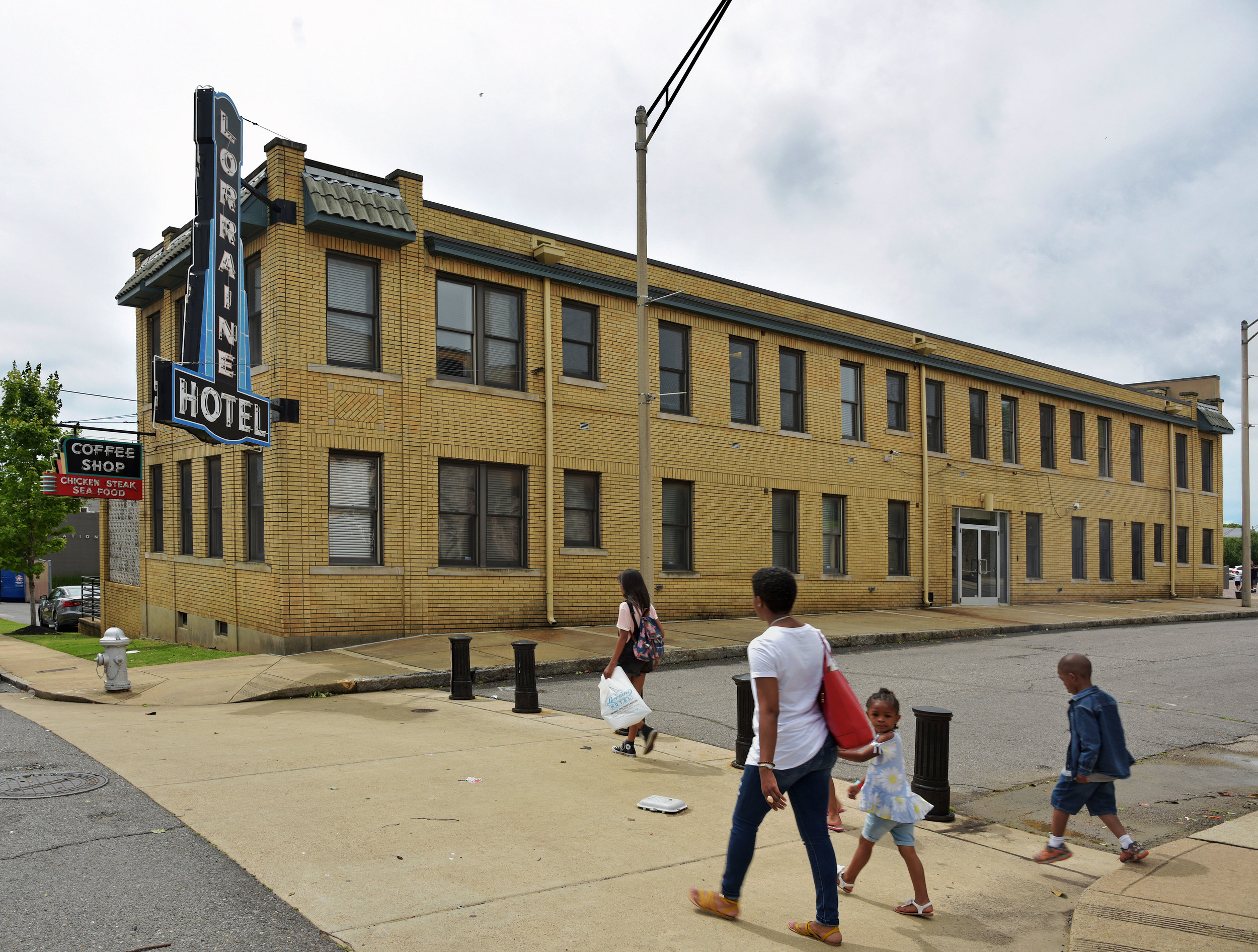
The National Civil Rights Museum honors and preserves the legacy of Dr. Martin Luther King, Jr., and chronicles the American civil rights movement and the ongoing struggle for human rights, which today has been taken up by the Black Lives Matter and the Fight Fair Action movements, amongst others. The Museum includes the the Lorraine Motel where Dr. King was assassinated in the spring of 1968.
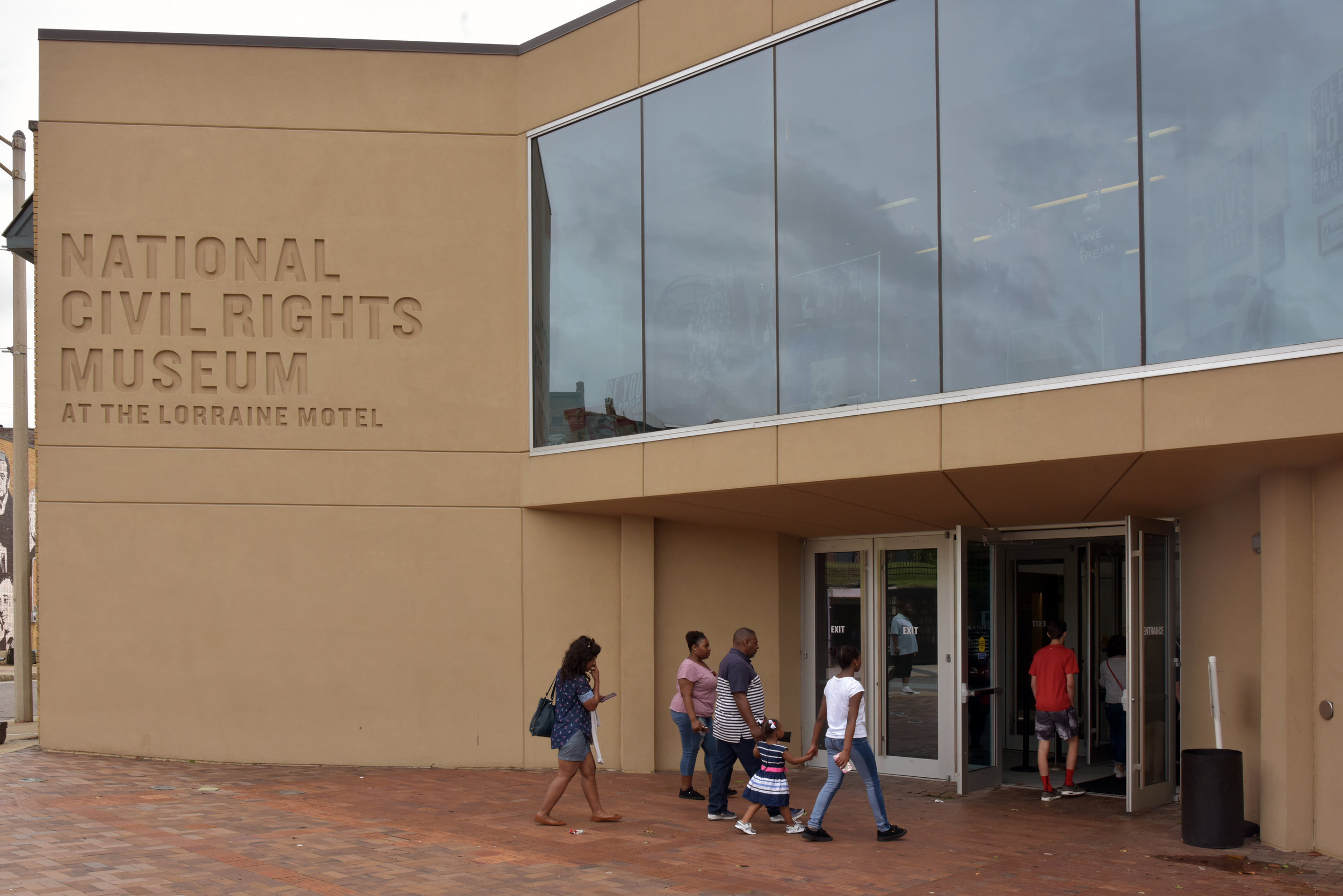
The Museum’s website states: “Our Museum is a monument to what can be achieved with persistence, tenacity, determination and courage." These qualities are represented today through the work of such people as Stacy Abrams, Patrisse Cullors, Alicia Garza, Opal Tmeti, Esmeralda Simmons, Melanie Campbell, James Rucker, Lateefah Simon, and many others. (e.g., see https://www.usatoday.com/story/money/2020/06/07/19-of-the-most-influential-civil-rights-leaders-of-the-21st-century/111907158/).

The Museum’s displays focus on the effects of systematic racism and inequality in America through: slavery; segregation in educational institutions, private businesses, and public facilities; violations of constitutional rights of peaceful protest through intimidation and brutality; and finally, the murder and assassination of civil rights leadership.
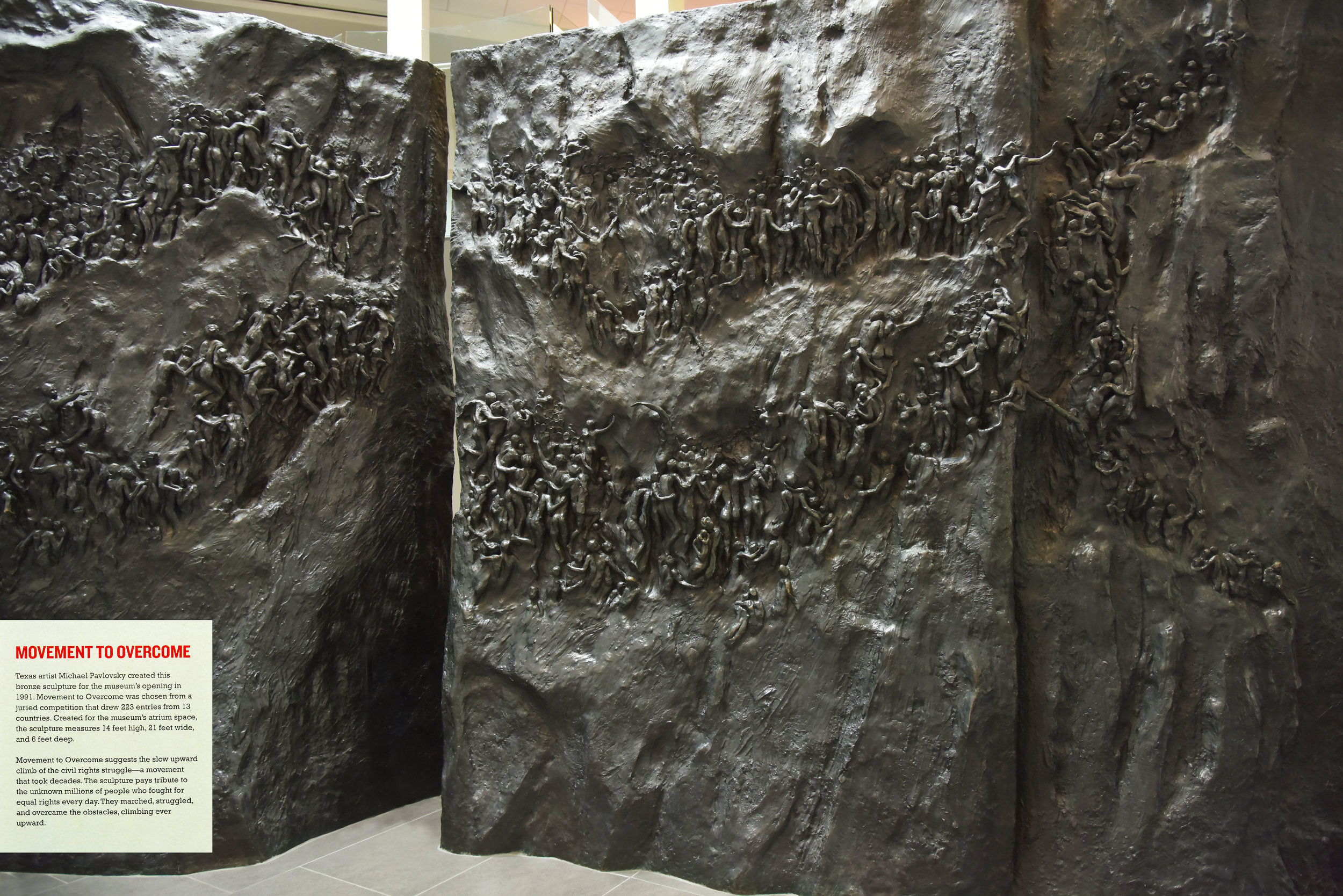
This sculpture, "Movement To Overcome," suggests the slow upward climb of the civil rights struggle. That climbed started with the first 20 or so African slaves who were brought to America in August, 1619 on the English ship the White Lion. Most of the slaves were bought by Governor Sir George Yeardley and head merchant Abraham Piersey and kept in Jamestown, VA, America’s first permanent English settlement.
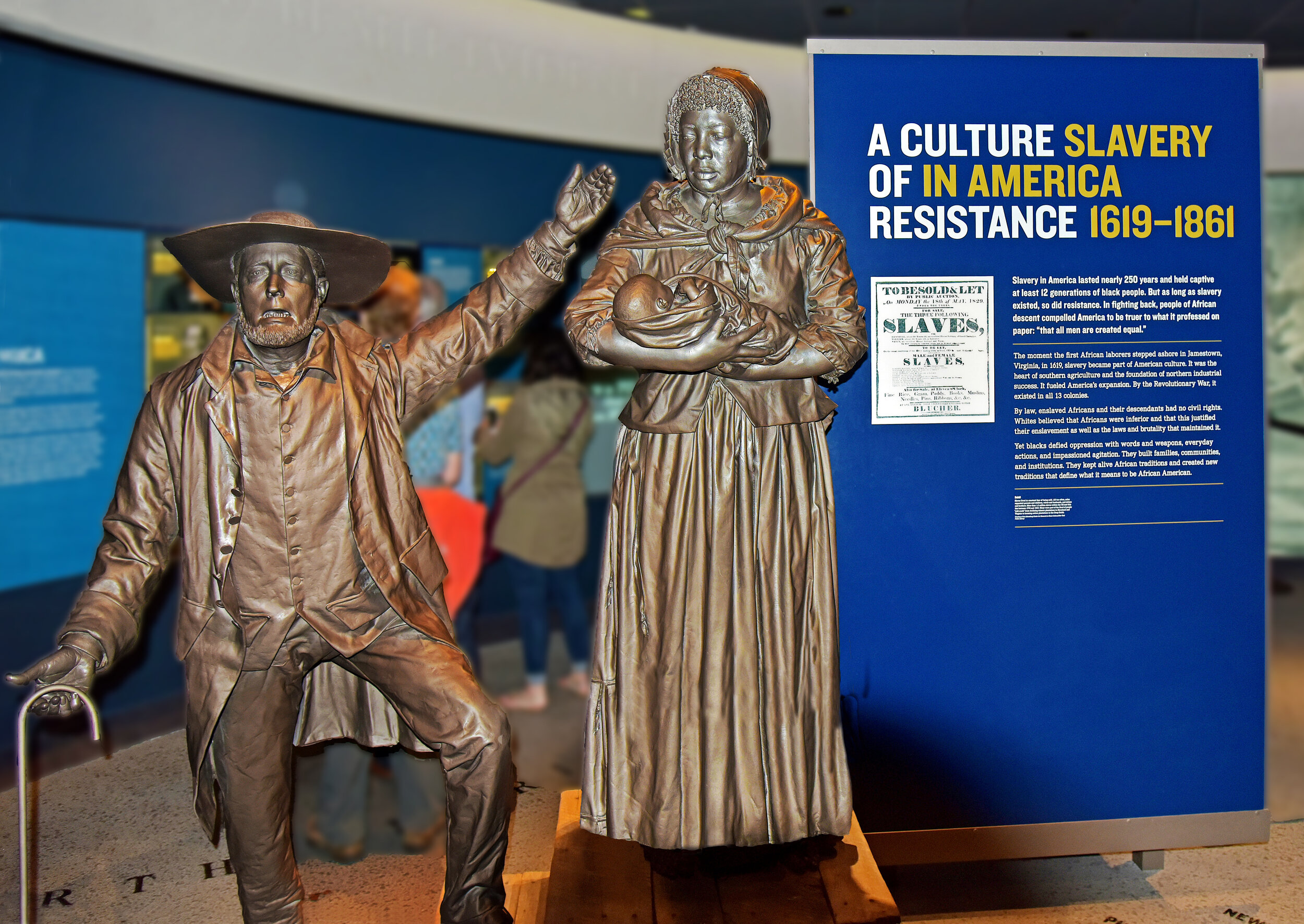
The sculpture, A Culture of Slavery, shows a mother and child being sold on the slave block. While the country's Declaration of Independence, penned in 1776, stated that "all men are created equal," slavery was not abolished in the U.S. until the 13th amendment was ratified on December 6, 1865.

In 1799 most of George Washington’s 318 enslaved people were field workers, more than half of whom were women. Field slaves lived in small shacks with a dirt floor and little or no furniture. Artists of the 18th century often included enslaved people in the background of portraits. As valuable property, a slave served as a symbol of prosperity, just as a portrait subject might wear a costly silk gown or pose in an expensive mahogany chair.
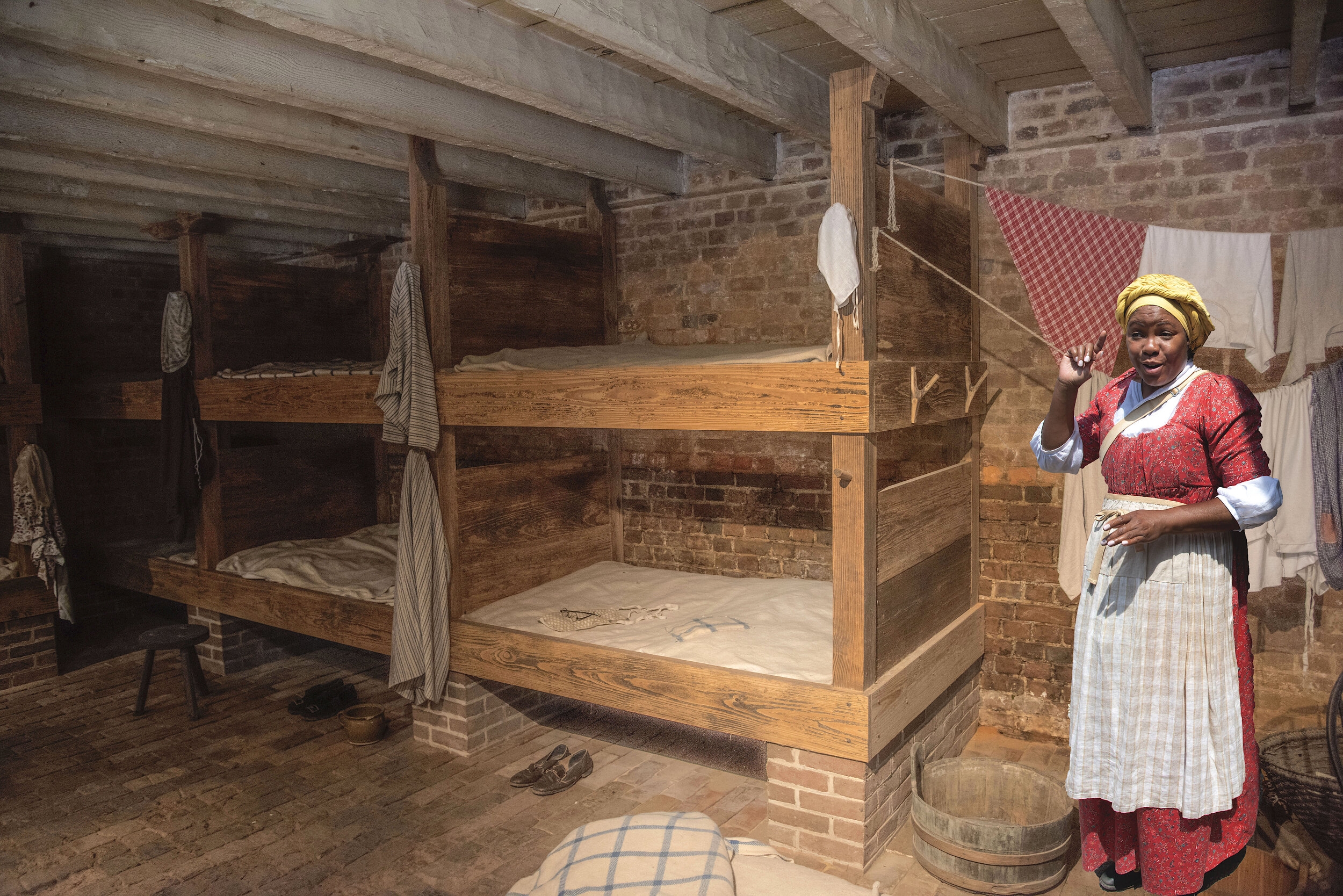
On the grounds of President George Washington's home at Mount Vernon a woman dressed as a slave explains the Female Slave Bunk Room, originally built in 1791-1792 during his first term as President (4/30/1789 to 03/4/1797). The room held 10 to 15 slaves and perhaps their children. The women’s lives were defined by their work. They lived close to the Mansion, where a few were house slaves, and close to the outbuildings, where others sewed clothing, cooked, or did laundry for the Washingtons. Some of these women were single, while others had husbands living elsewhere.
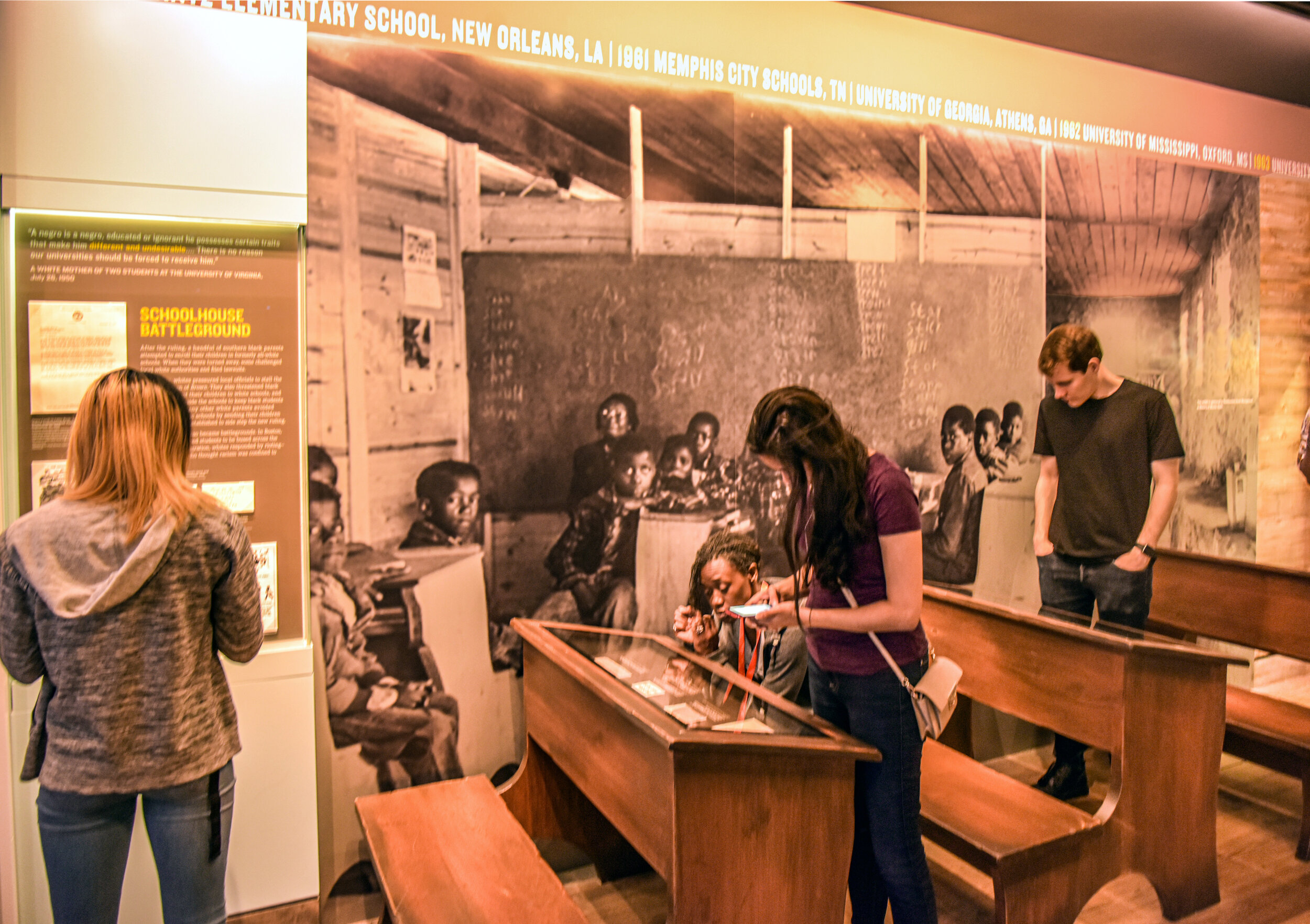
Even though the Supreme Court declared racial segregation in schools to be unconstitutional in the historical 1954 ruling Brown v. Board of Education, school districts are often segregated by income. On 5/2/2019 the New York Times reported, “More than half of the nation’s schoolchildren are in racially concentrated districts, where over 75 percent of students are either white or nonwhite.”

Americans often forget that as late as the 1960s most African-American, Latino, and Native American students were educated in wholly segregated schools funded at rates many times lower than those serving whites and were excluded from many higher education institutions entirely. Today, two-thirds of minority students still attend schools that are predominantly minority, most of them located in central cities and funded well below those in neighboring suburban districts.
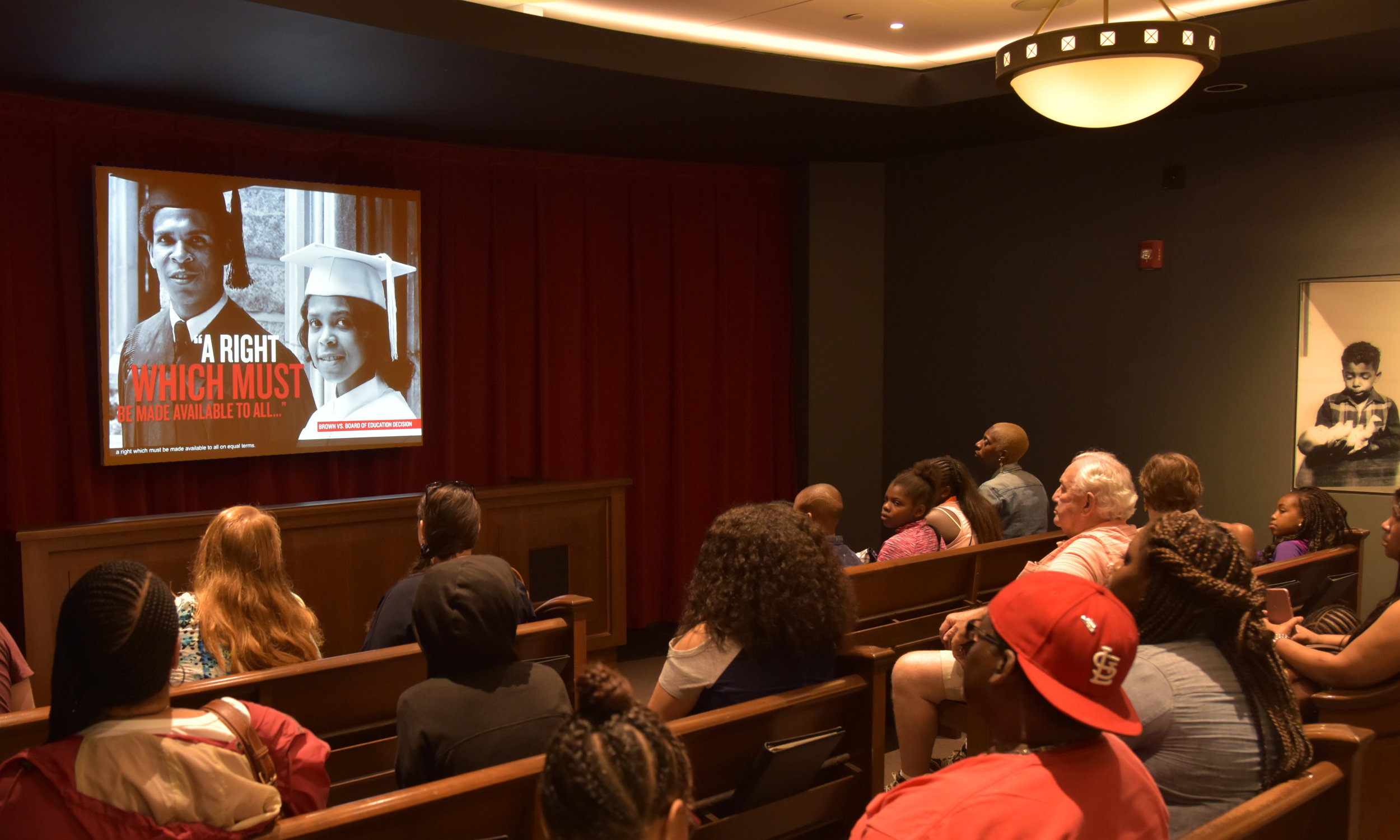
Future employment problems, poverty and incarceration continue to be created by existing segregated education systems and the lack of quality education opportunities for all. “Because of race and class segregation and its relationship to local school revenues, students in high-poverty racially segregated schools are not exposed to high-quality curricula, highly qualified teachers, or important social networks as often as students in wealthier, predominantly White schools.” Anne E. Casey Foundation, 11/25/2006
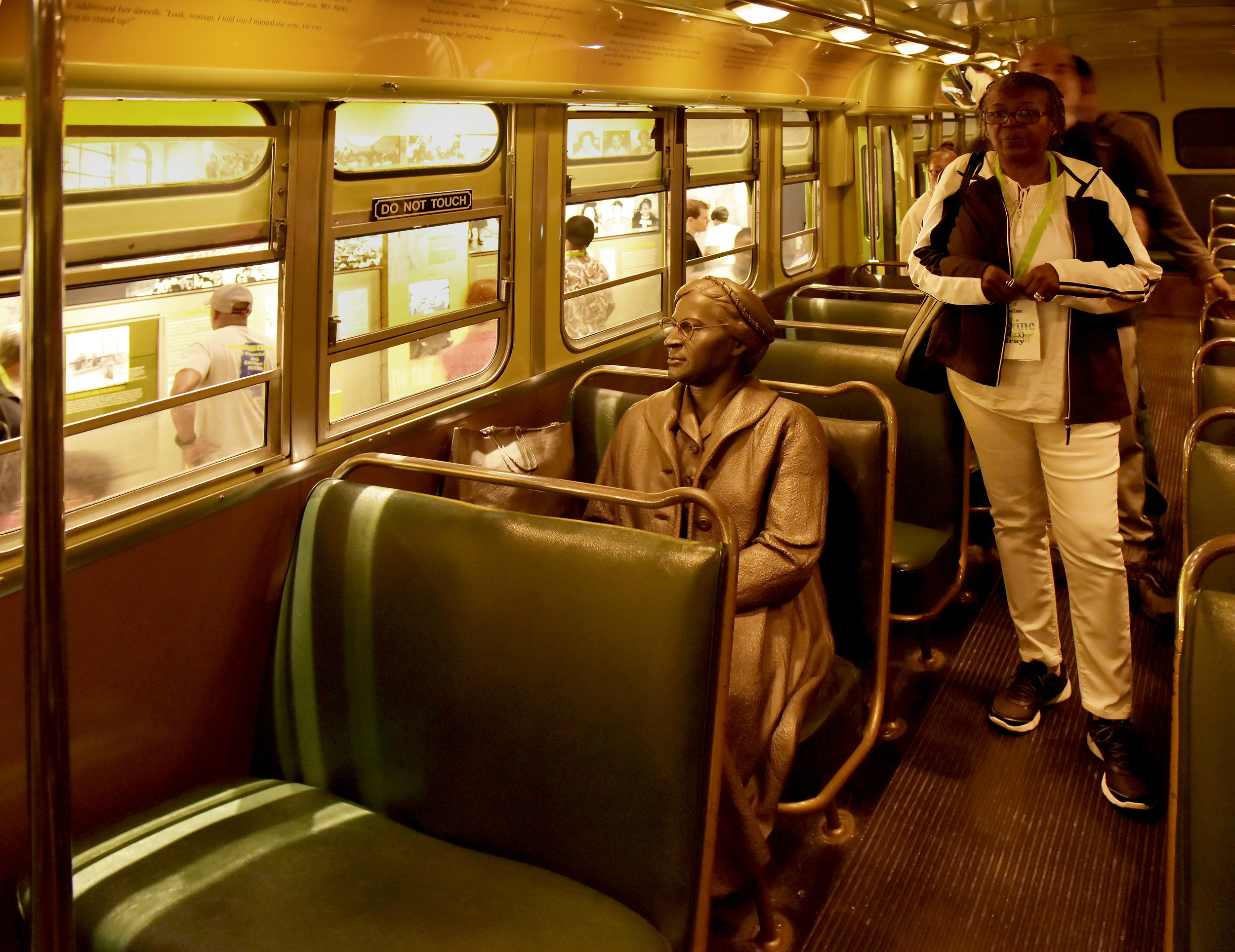
On 12/1/1955, in Montgomery, AL, Rosa Parks refused to obey a bus driver's order to give up her seat in the "colored section" to a white passenger, after the whites-only section was filled. Rosa Parks said, “The only tired I was, was tired of giving in.” Her defiance sparked the Montgomery Bus Boycott. Its success launched nationwide efforts to end racial segregation of public facilities.

In early February 25, 1960, a group of 35 black students at Alabama State College took seats at the lunchroom in the county courthouse attempting their own form of nonviolent resistance. The store owners closed the lunch counter and a mob of pro-segregationists physically assaulted the students. Governor John Patterson ordered the university to expel any student participating in sit-ins.
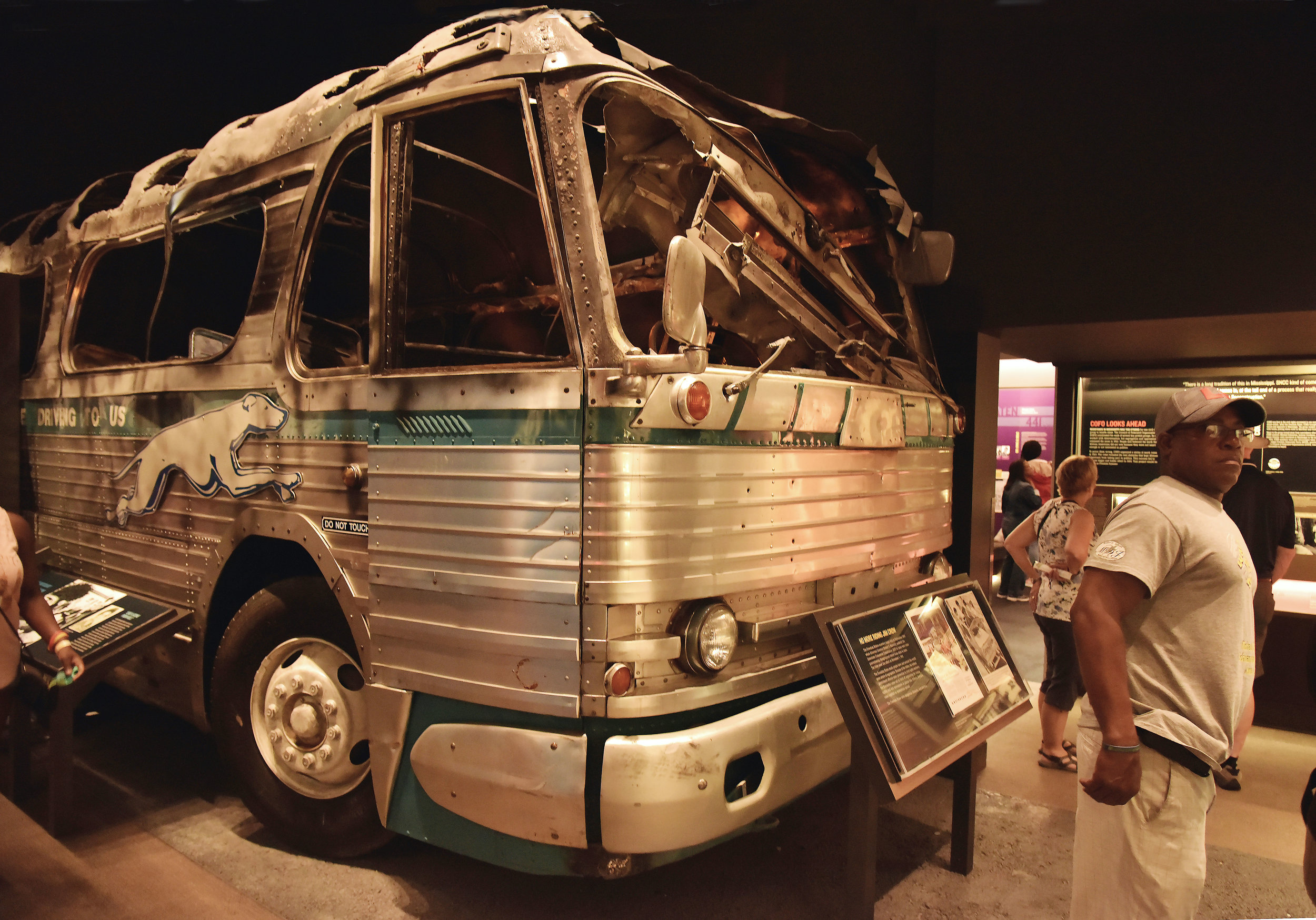
On 5/14/1961, a Greyhound bus carrying black and white "Freedom Riders" through Alabama was bombed and it burst into flames; the Freedom Riders escaped the bus but were brutally beaten.

Martin Luther King Jr. gave his "I Have A Dream" speech at The March on Washington, August 28, 1963, where 250,000 people gathered to advocate for the civil and economic rights for African Americans and an end to racism. The “I Have a Dream” speech portrays racial equality as a fulfillment of the promises of America’s Founding Fathers and documents. (see http://www.let.rug.nl/usa/documents/1951-/martin-luther-kings-i-have-a-dream-speech-august-28-1963.php)
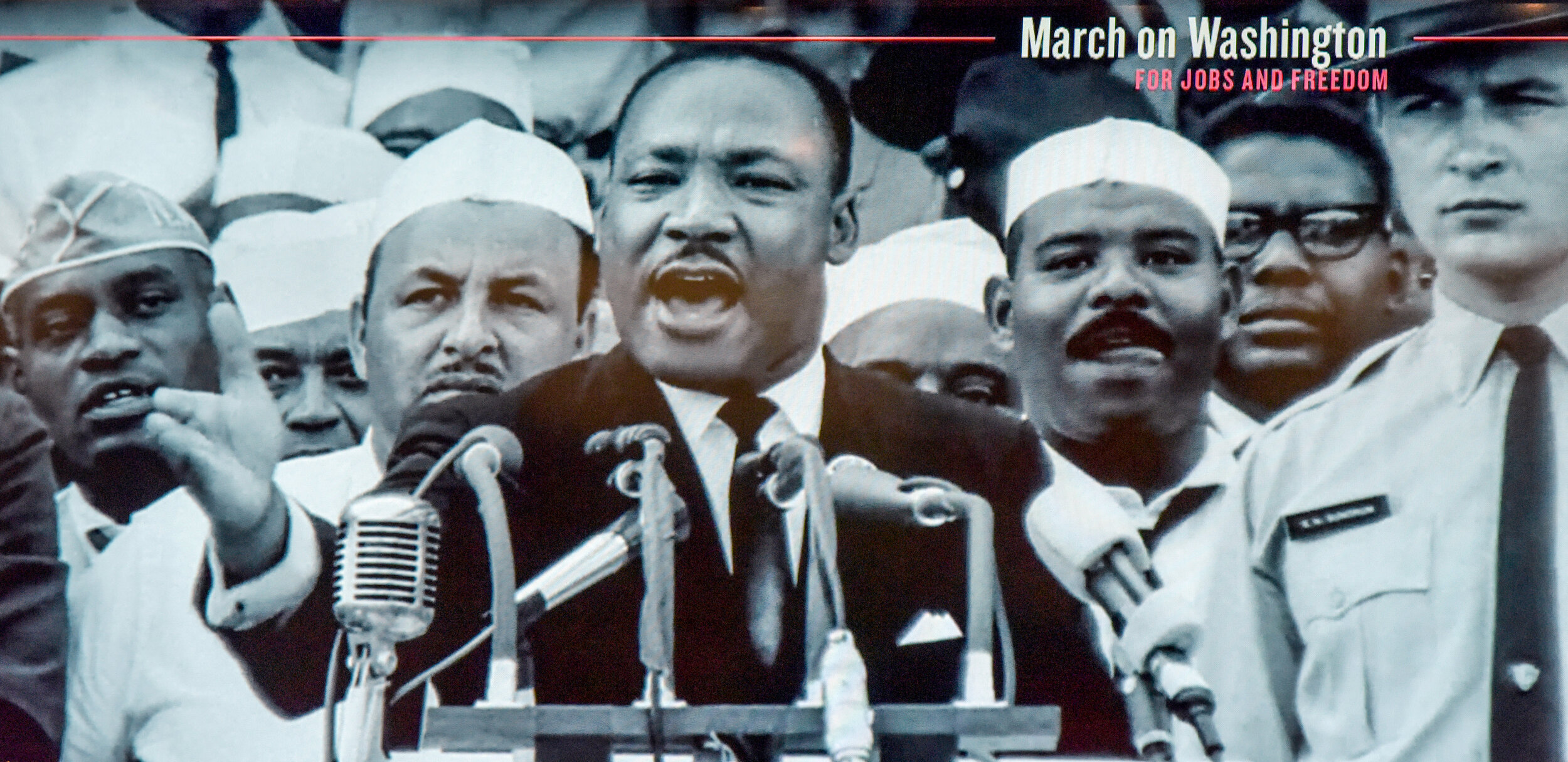
In his “I Have a Dream” speech King pointed out that the country’s founders had signed a “promissory note” that offered great freedom and opportunity. As appropriate today as it was in 1963, he stated, “Now is the time to make real the promises of democracy; now is the time to rise from the dark and desolate valley of segregation to the sunlit path of racial justice; now is the time to lift our nation from the quicksands of racial injustice to the solid rock of brotherhood; now is the time to make justice a reality for all of God’s children.” The speech played an important role in helping pas the 1964 Civil Rights Act.

In 1964, President Lyndon B. Johnson signed the Civil Rights Act of 1964, with the intention of ending discrimination based on race, religion, and national origin. Johnson was flanked by Martin Luther King Jr. and other civil rights leaders as he signed the Act.
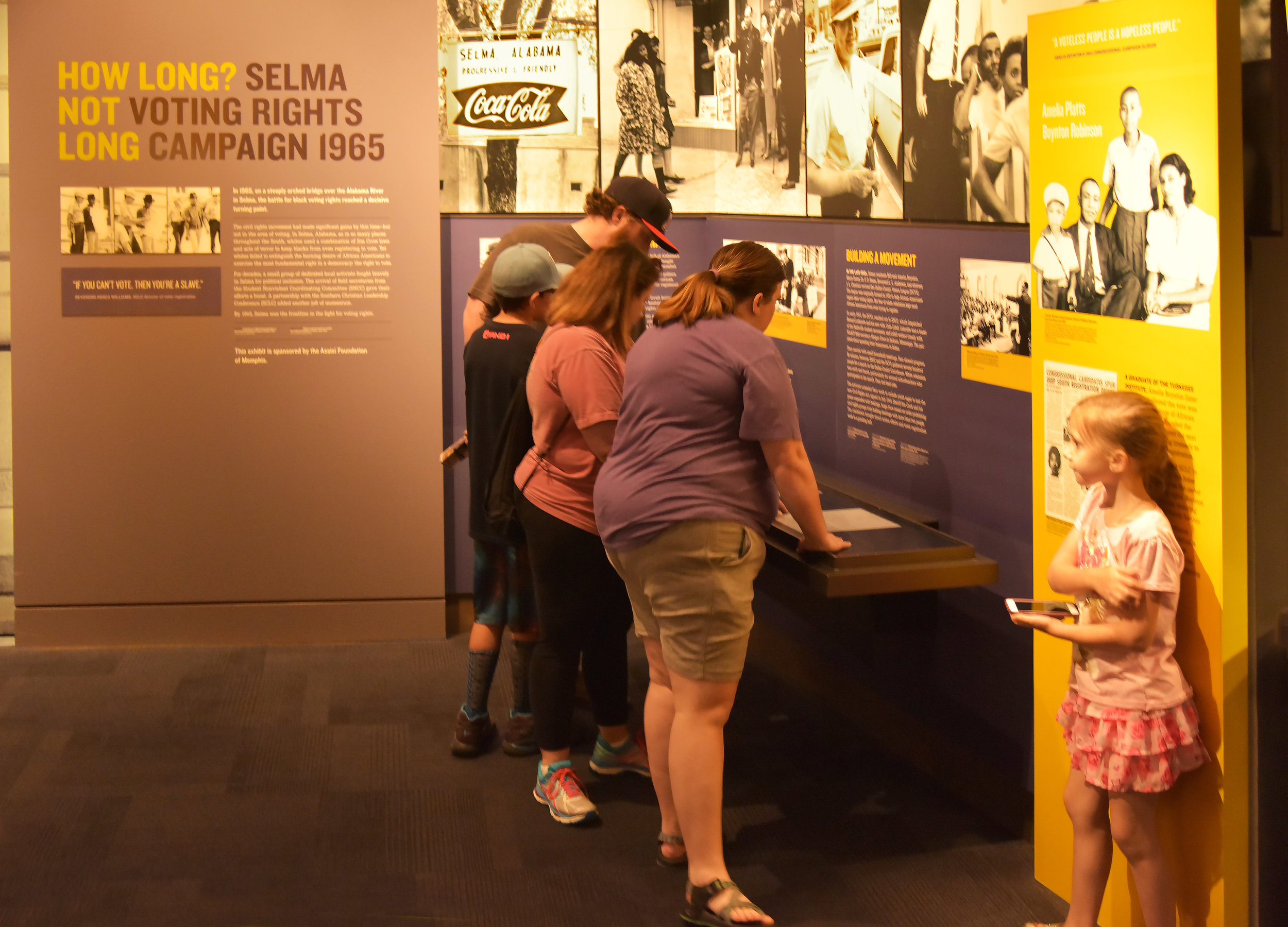
The 1965 Selma Voting Rights Campaign included three marches from Selma to Montgomery AL to demonstrate the desire of African-American citizens to exercise their constitutional right to vote. Fifty-five years later, we continue to struggle with voter suppression, e.g., suppression efforts range from overzealous voter ID laws and cuts to early voting, to mass purges of voter rolls and systemic disenfranchisement. In addition, legislators have redrawn district lines that determine the weight of your vote. Certain communities are particularly susceptible to suppression and in some cases, outright targeted — people of color, students, the elderly, and people with disabilities. (source: ACLU)

On February 18, 1965, in Marion, the county seat of Perry county, near Selma, a state trooper shot Jimmie Lee Jackson, a young African American man, during a peaceful voting rights march. Leaders called for a march to the state capital, Montgomery, to bring attention to the injustice of Jackson’s death, the ongoing police violence, and the sweeping violations of African Americans’ civil rights. On March 7, 1965, the first attempt of the Selma to Montgomery March was halted at the Edmund Pettus Bridge by State troopers and county possemen who attacked 600 unarmed marchers with bully clubs and tear gas; 50 of them had to be hospitalized.
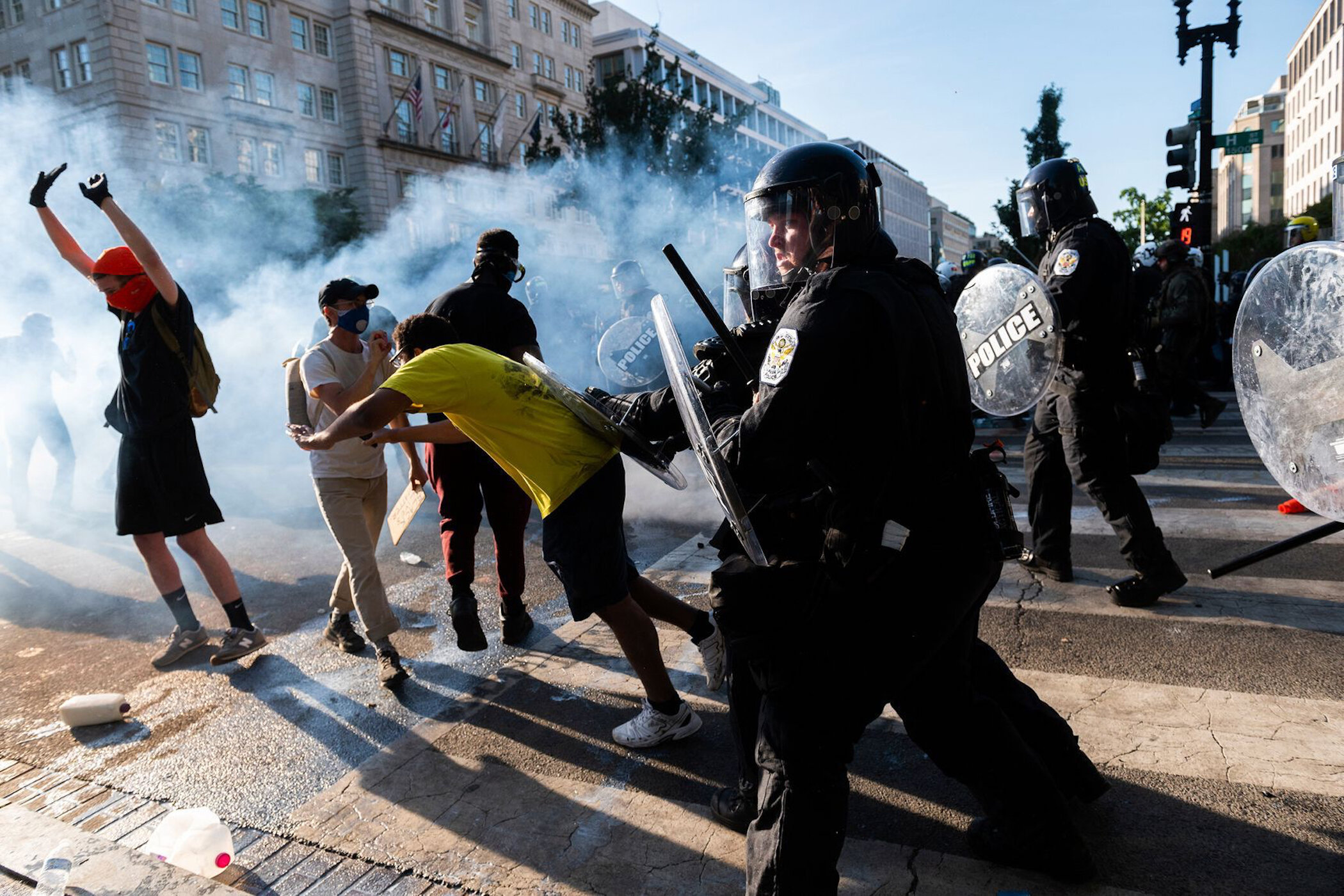
Law enforcement used tear gas on a peaceful protest near the White House against people who were gathered to protest the murder of George Floyd and police violence, and demand punishment for Derek Chauvin, a former Minneapolis police officer, and his accomplices. (Vox, June 2, 2020, Roberto Schmidt/AFP via Getty Images)
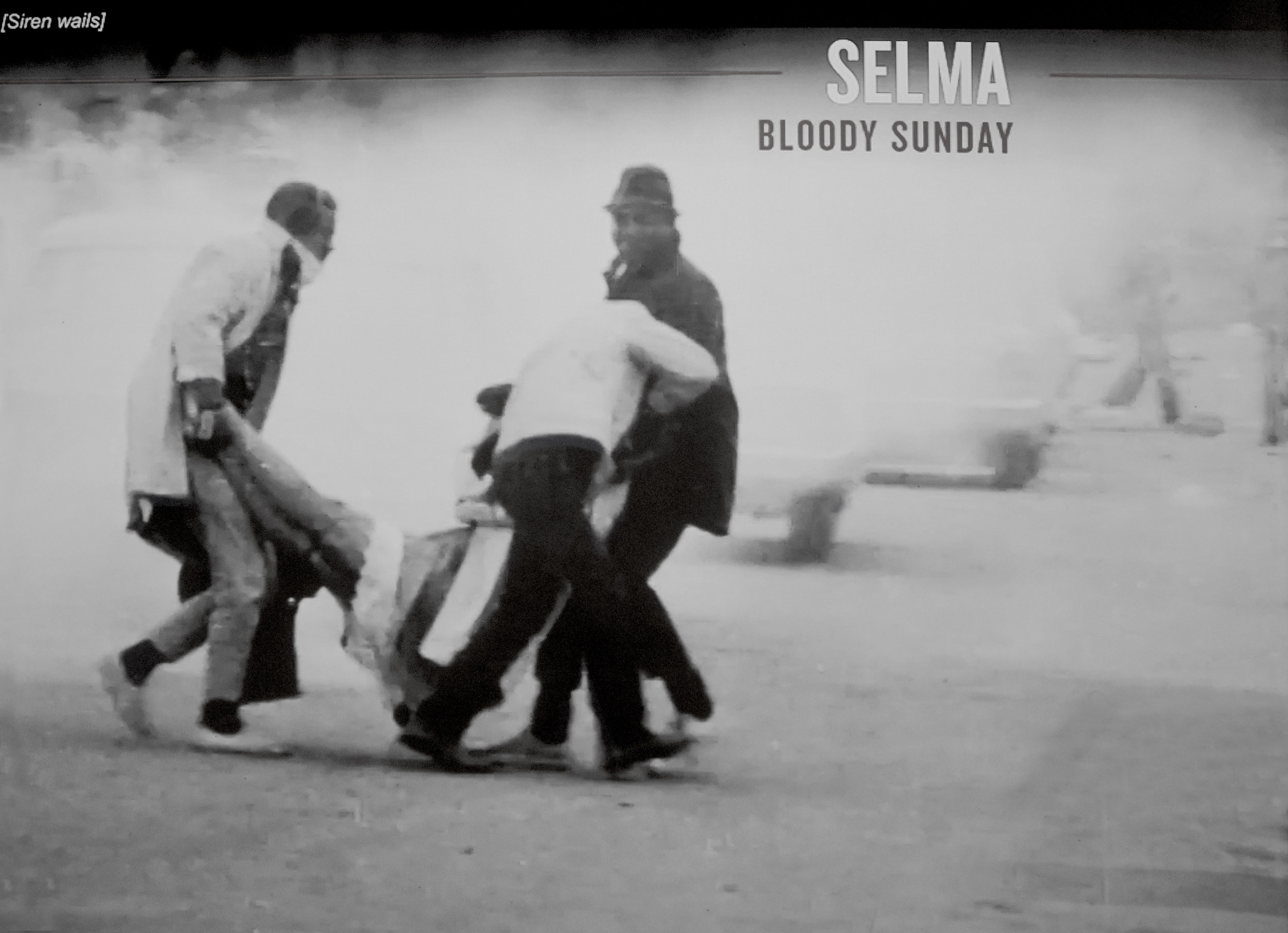
The march from Selma, Alabama, to the state’s capital, Montgomery, that occurred March 21–25, 1965, led by Martin Luther King, Jr., was the culminating event of several tumultuous weeks during which demonstrators twice attempted to march but were stopped, once violently, by local police. As many as 25,000 people participated in the roughly 50-mile (80-km) march. Together, these events became a landmark in the American civil rights movement and directly led to the passage of the Voting Rights Act of 1965.

In 2015, on its 50th anniversary of the Selma marches, then President Obama and his family marched from Selma to Montgomery, Alabama with Civil Rights leaders. He said, "The Americans who crossed this bridge, they were not physically imposing. But they gave courage to millions. They held no elected office. But they led a nation. They marched as Americans who had endured hundreds of years of brutal violence, countless daily indignities –- but they didn't seek special treatment, just the equal treatment promised to them almost a century before.” In 2020, President Obama’s message to all is, “VOTE!”

On June 1, 2020, police officers in riot gear pushed back demonstrators in front of St. John's Episcopal Church outside of the White House, in Washington D.C., during a protest over the death of George Floyd, police violence, and racism in America. President Obama and Dr. King both spoke of our country’s promise of equal treatment that African Americans have yet to realize. In 2020, tens of thousands of people of all races are protesting racial and economic inequality, providing each other and the nation with the courage to continue the struggle to have that promise realized. (Photo: 6/4/2020 ABC News report, Jose Luis Magana/AFP via Getty Images)
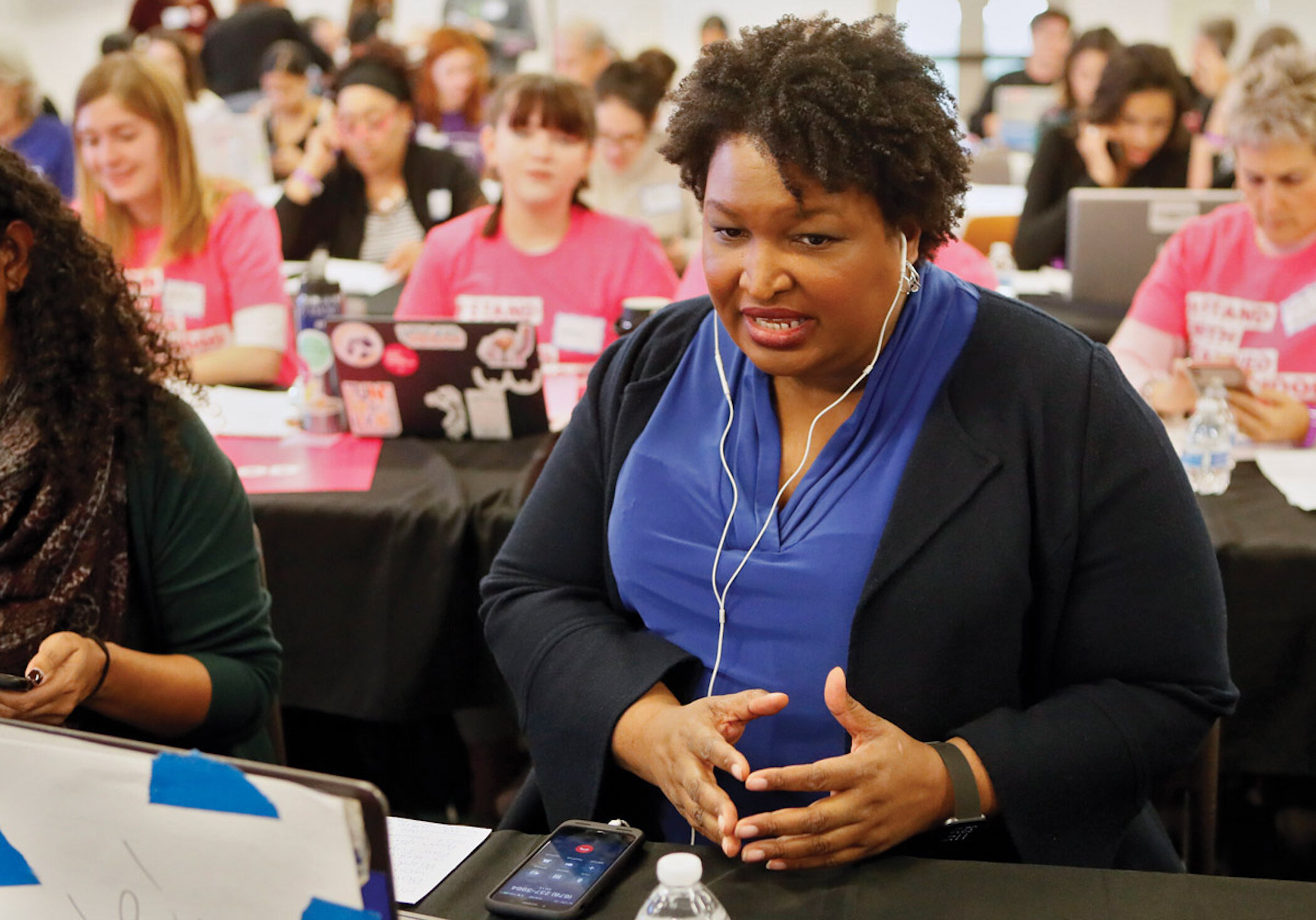
According to an AP report, a Trump reelection adviser, Justin Clark, stated that the Republican efforts in 2020 at voter suppression would be “a much more aggressive program, a much better-funded program.” Mechanisms being used to suppress voting are being focused on communities with a large number of people living on low incomes or people of color from exercising the voting rights. Stacy Abrams’ (pictured above) Fair Fight Action organization is working against voter suppression, stating that the issue is making sure that we have a fair fight, i.e.,the side that can actually turn out its voters wins legitimately based on simply who shows up, and not based on any barriers. (Photo:Bob Andres/via AP).

On March 29, 1968 over five thousand demonstrators, carrying signs which read "I Am A Man," participated in a march in Memphis with Dr. King in support of striking African American sanitation workers.
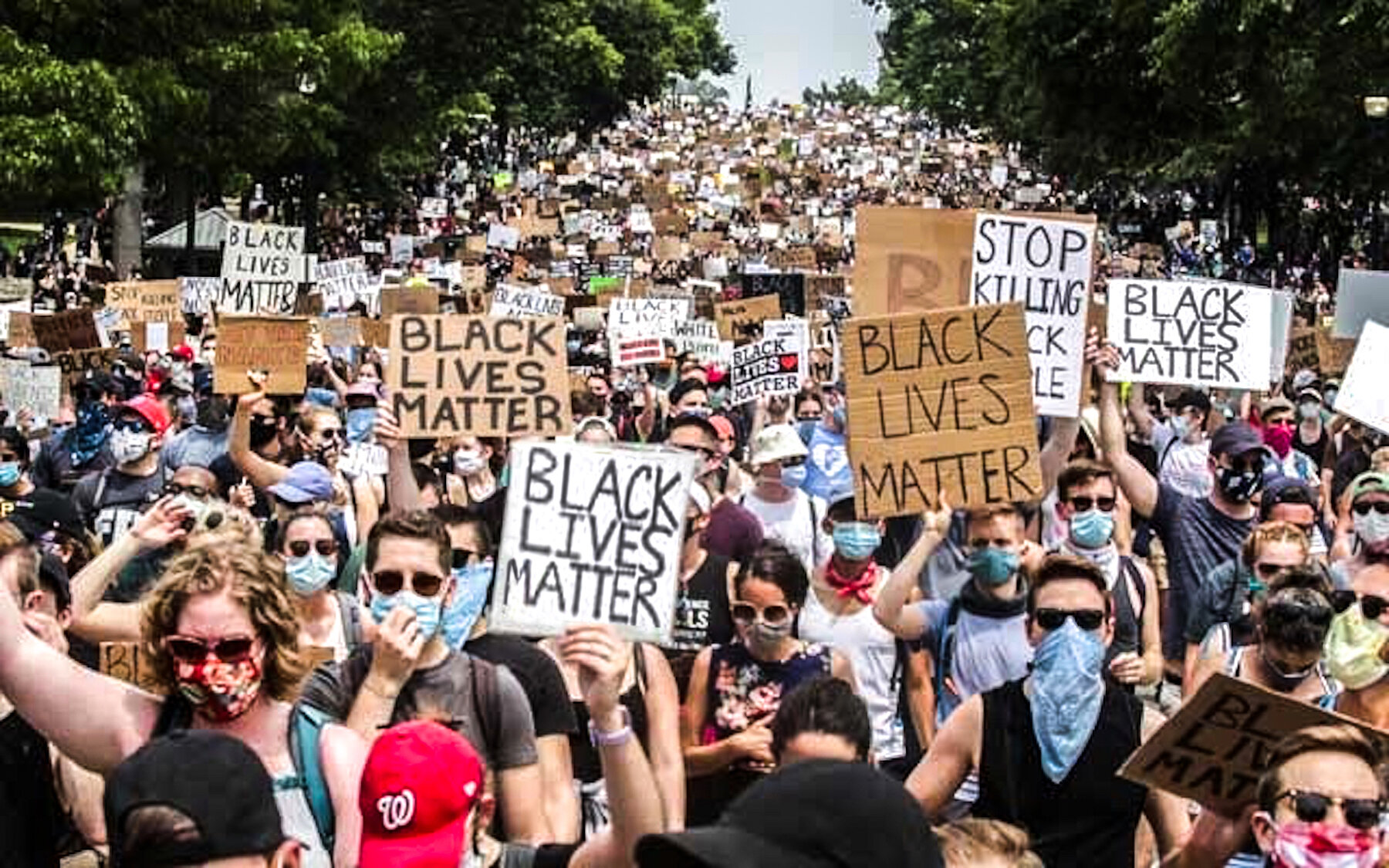
The I AM A Man signs carried by 1960 African Americans have been replaced in 2020 with BLACK LIVES MATTER signs carried by multi-racial protesters at Capitol Hill calling for justice for George Floyd and racial equality in the aftermath of the death of George Floyd in Minneapolis while in police custody. [Reuters: Thousands march on White House to protest violence by US police. Published: 07 Jun 2020 01:21 AM BdST Updated: 07 Jun 2020 05:01 AM BdST]
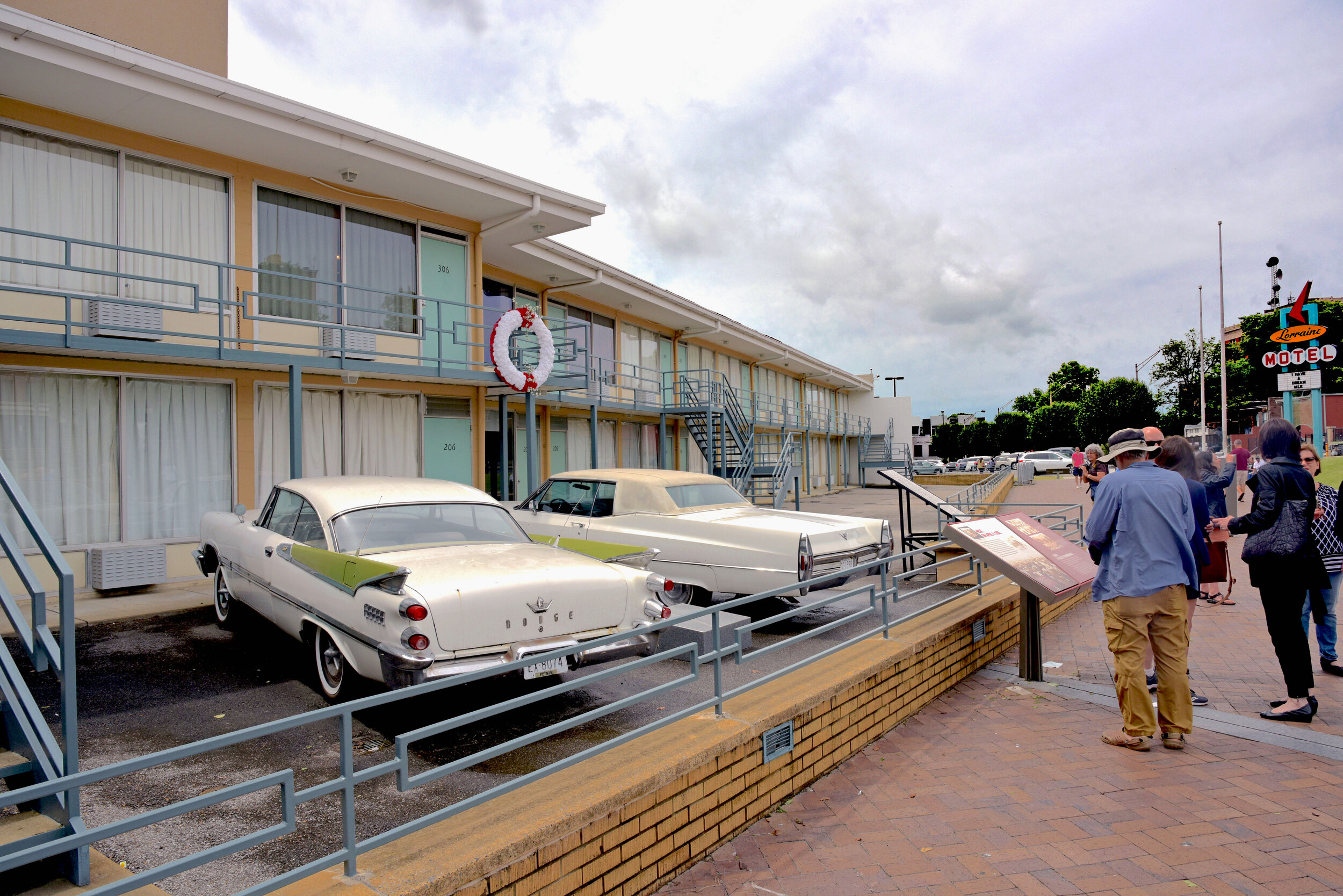
The African-American visitor to the Lorraine Motel in the 1950’s or 1960’s might arrived in the white 1959 Dodge Royal with lime green fins or the white 1968 Cadillac parked in front of the Motel. Dr. King often was driven to Memphis events in a white Cadillac owned by the late local activist and community leader Cornelia Crenshaw. Today the two cars sit below the wreath that commemorates the spot where Dr. King was shot. Martin Luther King, Jr., was the Lorraine Motel’s most famous guest. He stayed at the motel numerous times while visiting the city,

Before it was the Lorraine, it was the Marquette Hotel that catered to black clientele in segregated Memphis. Then, in 1945 black businessman Walter Bailey purchased the hotel, which he re-christened the Lorraine after his wife Loree. The motel became a destination for blacks and appeared in the Negro Motorists Green Book or “Green Guide,” which identified establishments that welcomed black travelers when Jim Crow (Separate but Equal Laws) restrictions offered limited options for services and lodging. Entertainers like Louis Armstrong, Cab Calloway, Nat King Cole, Sarah Vaughn, Sam Cooke, Aretha Franklin, and Otis Redding were all guests at the motel, and two famous songs, Wilson Pickett’s “The Midnight Hour” and Eddie Floyd’s “Knock on Wood,” were both composed at the Lorraine.

A large white carnation wreath hangs on the balcony outside Room 306, where Dr. King stayed while he was in Memphis to support a sanitation workers strike and stood at the time of his assassination. A memorial plaque sits below the room referring to Dr. King’s dream of equality and challenging all that have gone after to him to make that dream a reality. People have taken to the streets to protest the murder of George Floyd and more recently, Rayshard Brooks, to stop the nightmare that is racial hate, racial injustice, racial inequality.

Dr. King shared this room (Rm. 306) with Ralph Abernathy, Southern Christian Leadership Conference colleague, the night before the assassination, when he gave his prescient “Mountaintop” speech on April 3, 1968, in which he said: “We’ve got some difficult days ahead, but it really doesn’t matter with me now, because I’ve been to the mountaintop … I’ve seen the Promised Land. I may not get there with you. But I want you to know tonight, that we, as a people, will get to the Promised Land” (King, “I’ve Been,” 222–223). He was seeking to restore nonviolence back to the movement in Memphis.

On 4/3/1968, the Rev. Martin Luther King Jr. stood with Hosea Williams, Jesse Jackson, and Ralph Abernathy on the balcony of the Lorraine Motel. That night he spoke at the Bishop Charles Mason Temple and as he concluded his speech he began to reminiscence about his near fatal stabbing in September 1958. He exclaimed that he would have missed the emergence of the student sit-ins in 1960, the Freedom Rides in 1961, the Albany Movement in 1962, the March on Washington for Jobs and Freedom in 1963, and the Selma to Montgomery March in 1965. These were examples of the use of non-violent tools successfully used to protest injustice. [AP Photo/Charles Kelly, File, AP Was There: The assassination of Martin Luther King Jr. April 4, 2018]
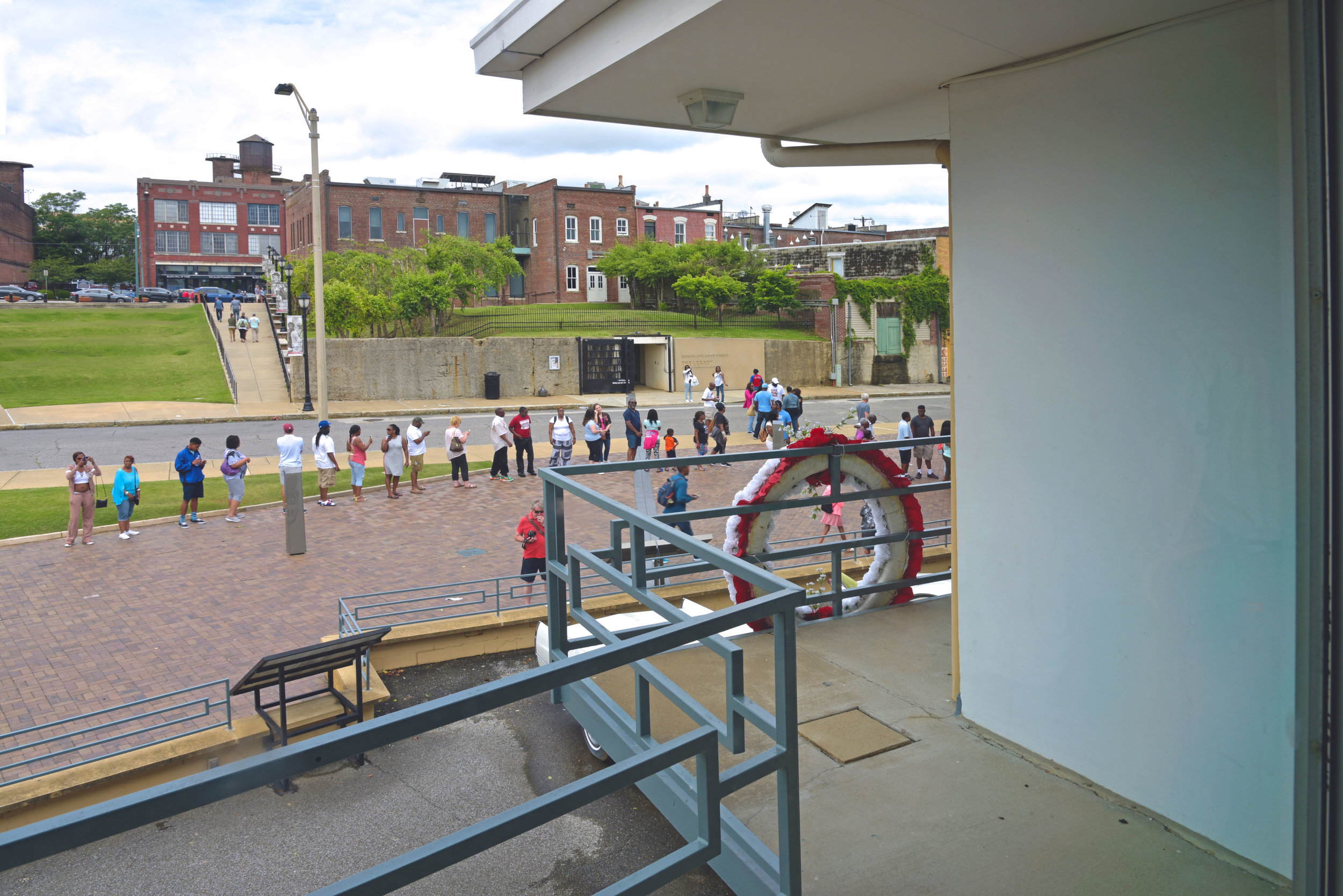
In a prophetic finale to his “Mountaintop” speech, King revealed that he was not afraid to die: “Like anybody, I would like to live a long life—longevity has its place. But I’m not concerned about that now. I just want to do God’s will…. And so I’m happy tonight; I’m not worried about anything; I’m not fearing any man. Mine eyes have seen the glory of the coming of the Lord.” The next day, April 4, 1968, at 6:01 p.m., Dr. Martin Luther King was assassinated on this balcony while waiting for a limousine to take him to dinner at Reverent Billy Kyles’ home.
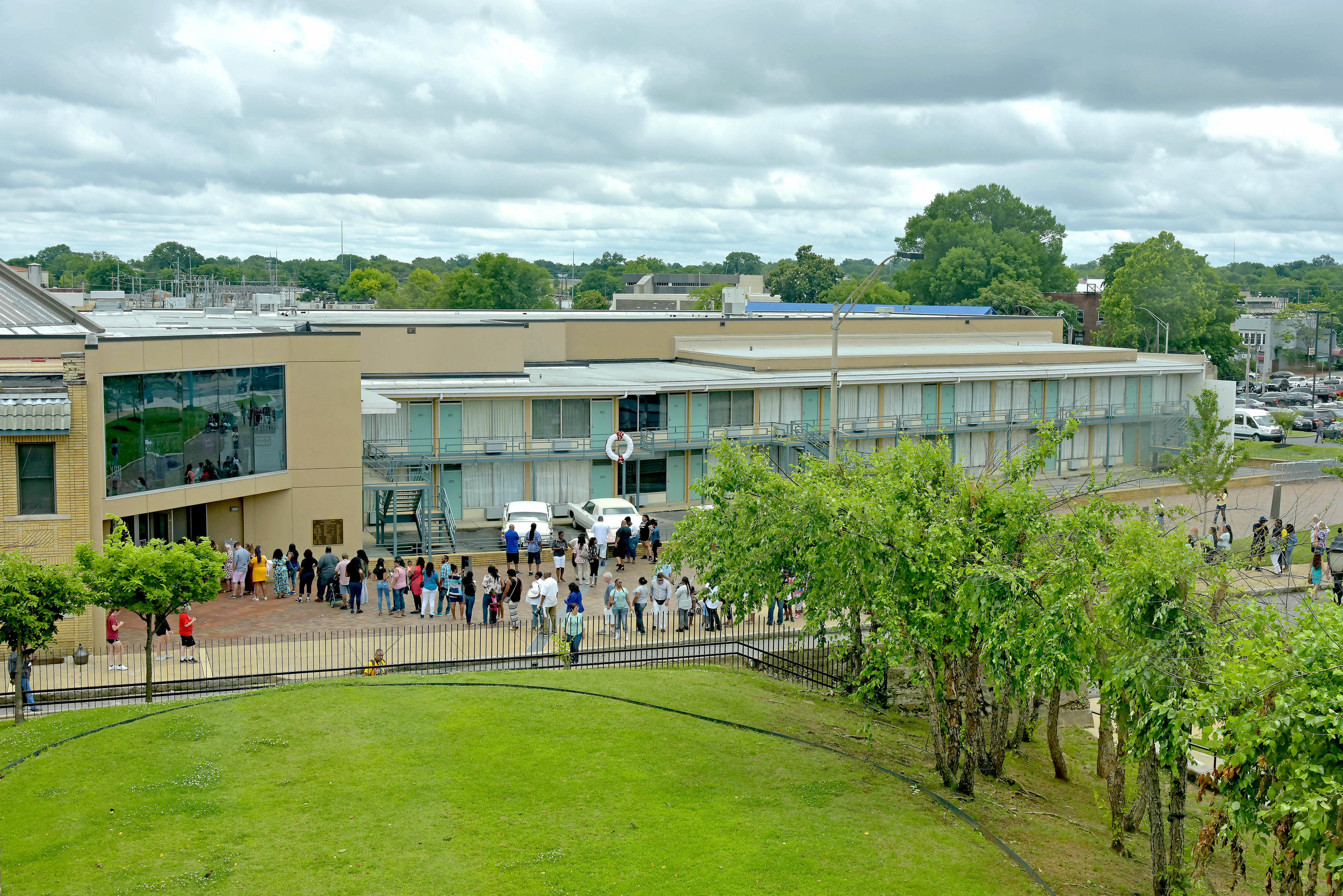
From the Young and Morrow Building and Boarding House 2nd floor bathroom there is a perfect view to the Lorraine Motel balcony where Dr. King and his guests were standing - you can see the wreath.
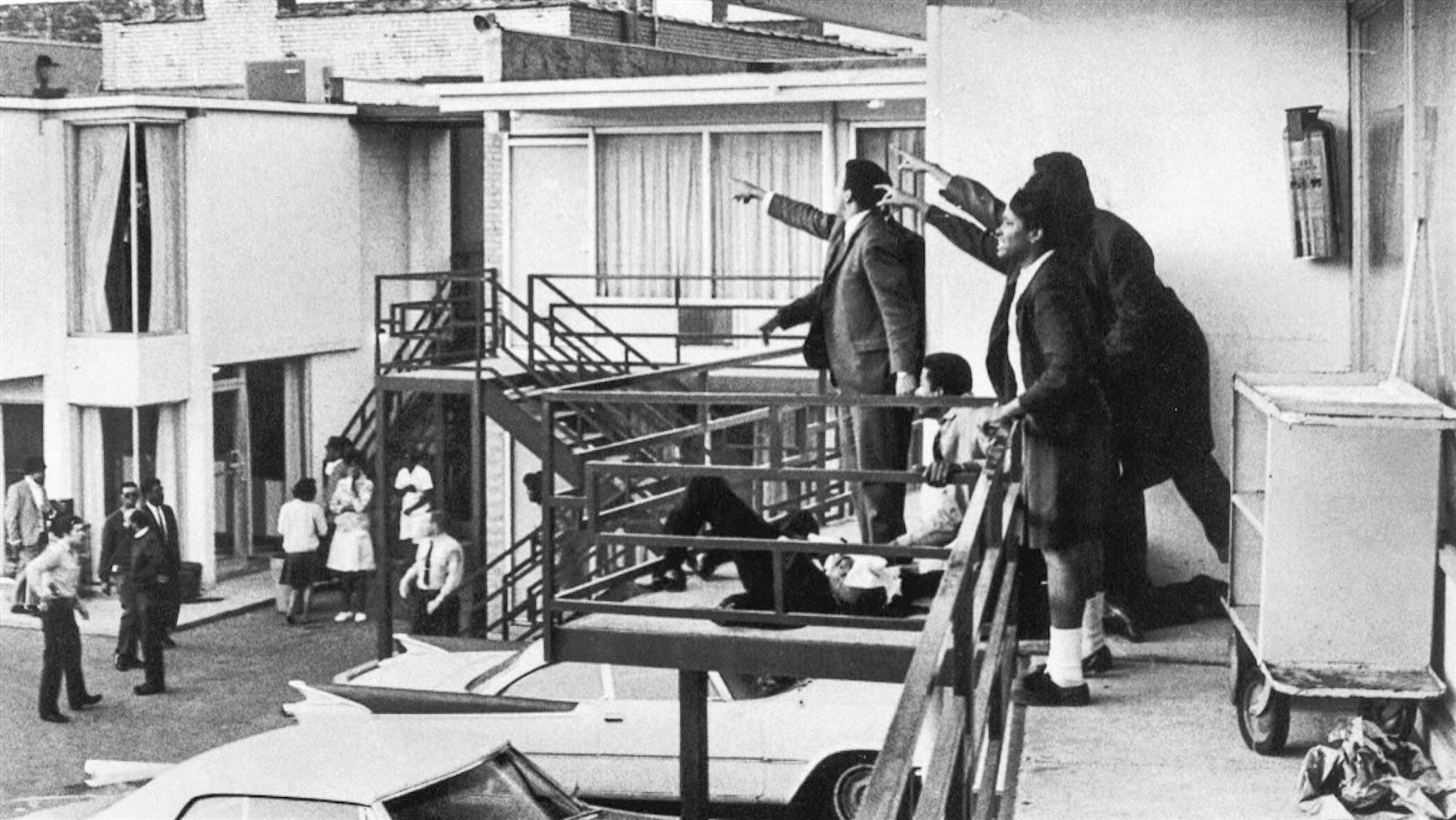
With Dr. King lying on the balcony, his companions pointed to the building across the street, the Young & Morrow Building, as the location of the shooter - James Earl Ray, hate in hiding.

James Earl Ray rented a room in the Young and Morrow Building & Boarding House sits across from the Lorraine Motel under the name Eric Starvo Galt. With one shot, hiding in the 2nd floor bathroom (circled in red ) of the rooming house, he was able to murder Dr. KIng. With one knee on his neck, out in plain sight, Derek Chauvin was able to kill George Floyd; with two bullets in the back, at a Wendy’s parking lot, Garrett Wolfe was able to kill Rayshard Brooks. When does it stop?

On April 4, 1968, Ray stood in the bathtub of the bathroom of the Young and Morrow Building & Rooming House, balanced his rifle on a window ledge and shot King as the civil rights leader was standing on a balcony outside of his motel room. After shooting King, Ray immediately fled, setting off a manhunt that would last more than two months and cover five countries.

Ray bought the .30-06 Remington rifle he used to kill Rev. King for just under $250 in Birmingham. It is displayed across the street from the Lorraine Motel in the Young-Morrow Building & Boarding House. Evidence suggests that Ray had little stomach for the integration policies that were sweeping the country. By the way, a review of the academic literature by Hepburn & Hemenway, in 2004 looking at Firearm availability and homicide found that evidence indicates that gun availability is a risk factor for homicide, both in the United States and across high-income countries. Specifically, studies show that in homes, cities, states and regions in the U.S., where there are more guns, both men and women are at a higher risk for homicide, particularly firearm homicide.

Fleeing the scene after the shooting, James Earl Ray abandoned his rifle in the right hand doorway of the Young & Morrow Building on Main Street, Memphis, TN.
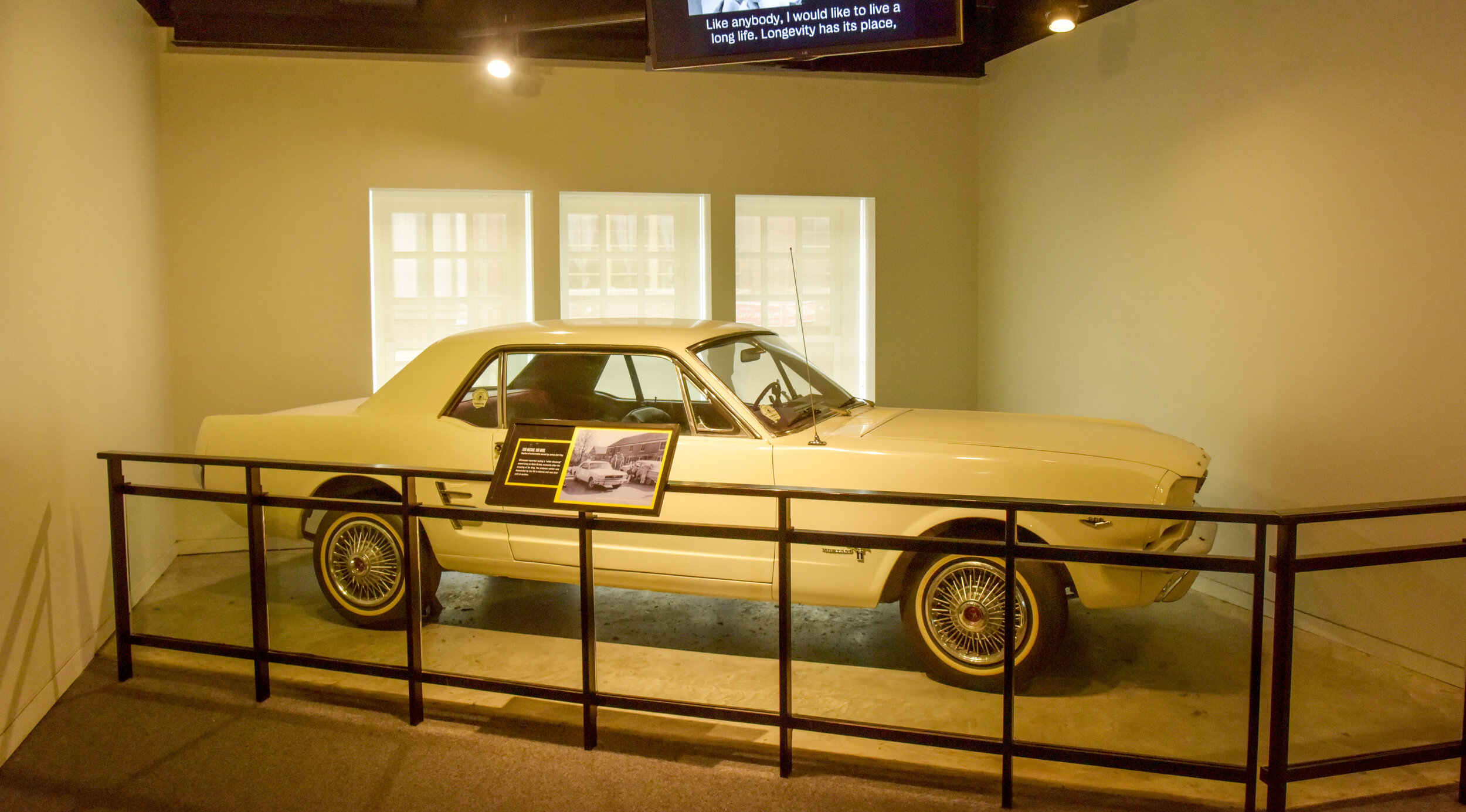
James Earl Ray fled in a 1966 White Mustang, drove 11 hours to Atlanta, abandoned the Mustang (where it was found by the FBI) and fled north to Canada. On April 5, President Johnson met with an array of leaders including, Vice President Hubert Humphrey, U.S. Supreme Court Chief Justice Earl Warren, Supreme Court Justice Thurgood Marshall, and federal judge Leon Higginbotham; government officials such as D.C. Mayor Walter Washington; legislators Mike Mansfield, Everett Dirksen, William McCulloch; and civil rights leaders included Whitney Young, Roy Wilkins, Clarence Mitchell, Dorothy Height, etc. At the meeting, Mayor Washington asked President Johnson to deploy troops to the District of Columbia. Richard Hatcher, the newly elected black mayor of Gary, Indiana, spoke about white racism and his fears of racially motivated violence in the future. Many of these leaders told Johnson that socially progressive legislation would be the best response to the crisis.The meeting concluded with prayers at the Washington National Cathedral.

In response to Dr. King’s assassination on 4/4/1968, there were riots, known as the Holy Week Uprising, a wave of civil disturbance which swept the United States. Some of the biggest riots took place in Washington, D.C. (Photo: Soldiers stand near ruined buildings in Washington, D.C.), Baltimore, Chicago, and Kansas City. According to press secretary George Christian, President Johnson was not surprised by the riots that followed: "What did you expect? I don't know why we're so surprised. When you put your foot on a man's neck and hold him down for three hundred years, and then you let him up, what's he going to do? He's going to knock your block off." However, in opposition to those calling for military deployments, Johnson chose to focus his political capital on a fair housing bill proposed by Senator Sam Ervin, and urged Congress to pass the bill. These events led to the rapid passage of the Civil Rights Act of 1968, Title VIII of which is known as the "Fair Housing Act".

More than 3,000 FBI agents investigated the case, following thousands of anonymous tips, making it "the largest manhunt in American history up to that point." Finally, on July 19, 1968, the FBI caught up with Ray in London and extradited him to the United States. Ray pleaded guilty to the murder, something he'd spend the rest of his life trying to reverse, and was sentenced to 99 years in prison.
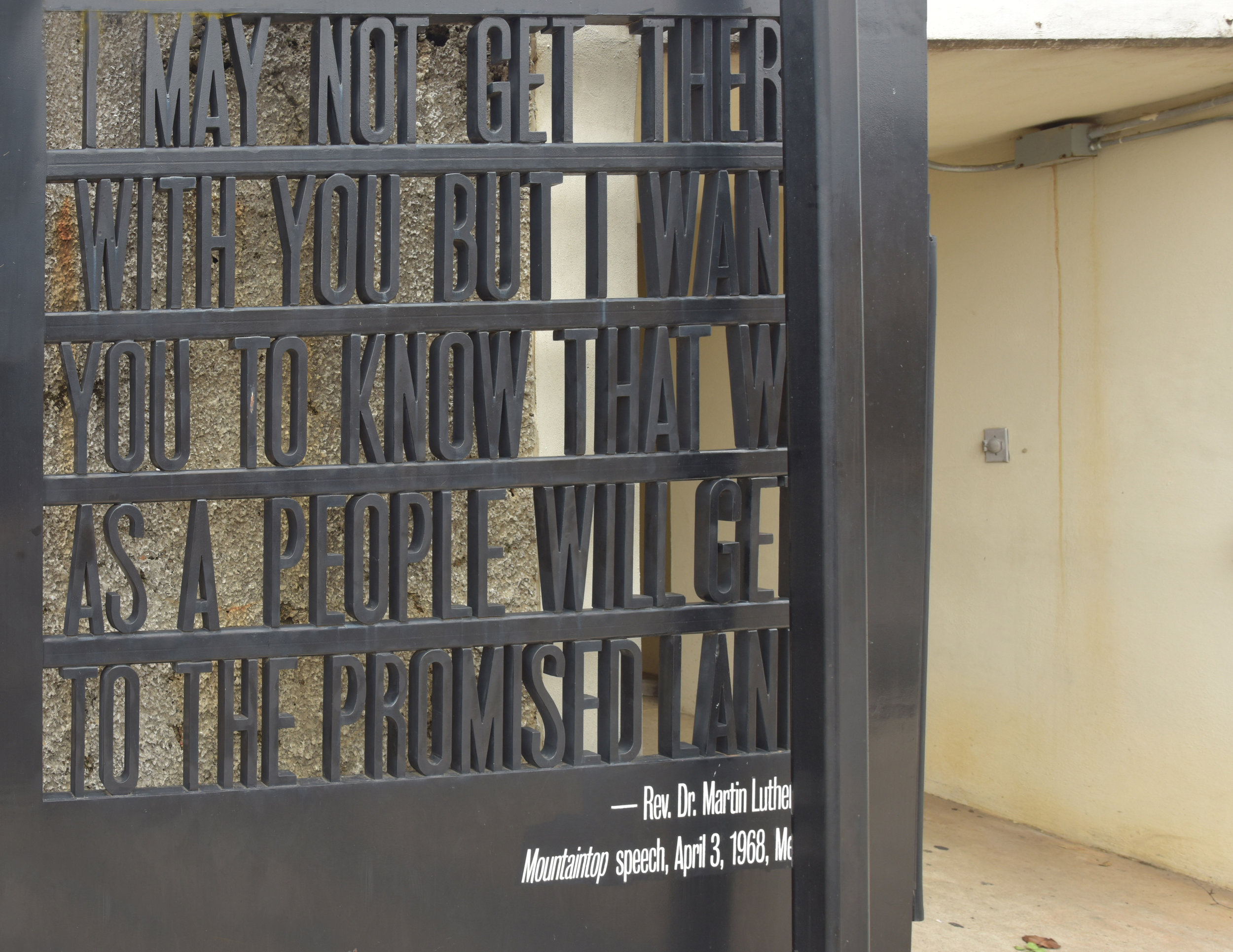
The gate on the entrance to the Young & Morrow Building contains a quote from Dr. King’s “Mountaintop” speech - “We as a people will get to the Promised Land.” The Black Lives Matter website, (blacklivesmatter.com/about/, states, “We are working for a world where Black lives are no longer systematically targeted for demise. We affirm our humanity, our contributions to this society, and our resilience in the face of deadly oppression. The call for Black lives to matter is a rallying cry for ALL Black lives striving for liberation.” It would seem that “Liberation” would lead to the fulfillment of the “promissory note.”

June 3, 2020, fired police officer Derek Chauvin was charged with second-degree murder after an official autopsy confirmed thatGeorge Floyd's death was the result of homicide. Three other officers who were involved in George Floyd's murder were charged with aiding and abetting second-degree murder. Chauvin was filmed with kneeling on Floyd’s neck while Floyd pleaded for air. Protesters around the world called for justice for Floyd and a halt to racial discrimination and police violence.

Pictured is a memorial for George Floyd outside the Cup Foods convenience store in Minneapolis in May 2020. (Flickr/Lorie Shaull). In spite of the the Death in Custody Reporting Act of 2013, in 2019 federal officials had not yet gathered the data and made it public. However, the news media has become a source of data concerning these types of deaths as it became more likely to cover black men’s fatal encounters with police following the August 2014 death of 18-year-old Michael Brown, who was fatally shot by a police officer in Ferguson, Missouri. In addition, police-involved deaths after Michael Brown’s death have been more likely to be reported on as part of a larger pattern of police violence against Black citizens. It would seem that general public awareness is the first step toward political change.

Philonise Floyd, brother of George Floyd, implored lawmakers to act so that his brother’s death after being brought into police custody, which he had watched over and over again, was “not in vain.” He explained to the House Judiciary Committee hearing on Policing Practices and Law Enforcement Accountability: “I’m tired! I’m tired of pain, the pain you feel when you watch something like that. I’m here today to ask you to make it stop. Stop the pain. Stop us from being tired.” Thus, Mr. Floyd asked CONGRESS to “change history,” as the banners on this walkway suggest, and to fulfill the promise of our forefathers, for only that can stop the pain.